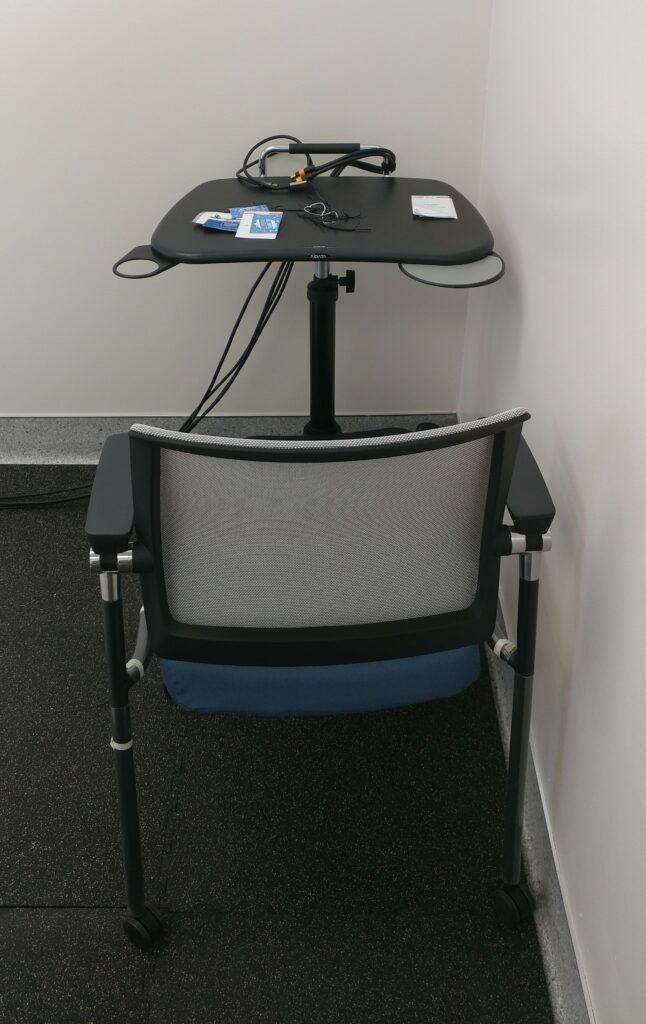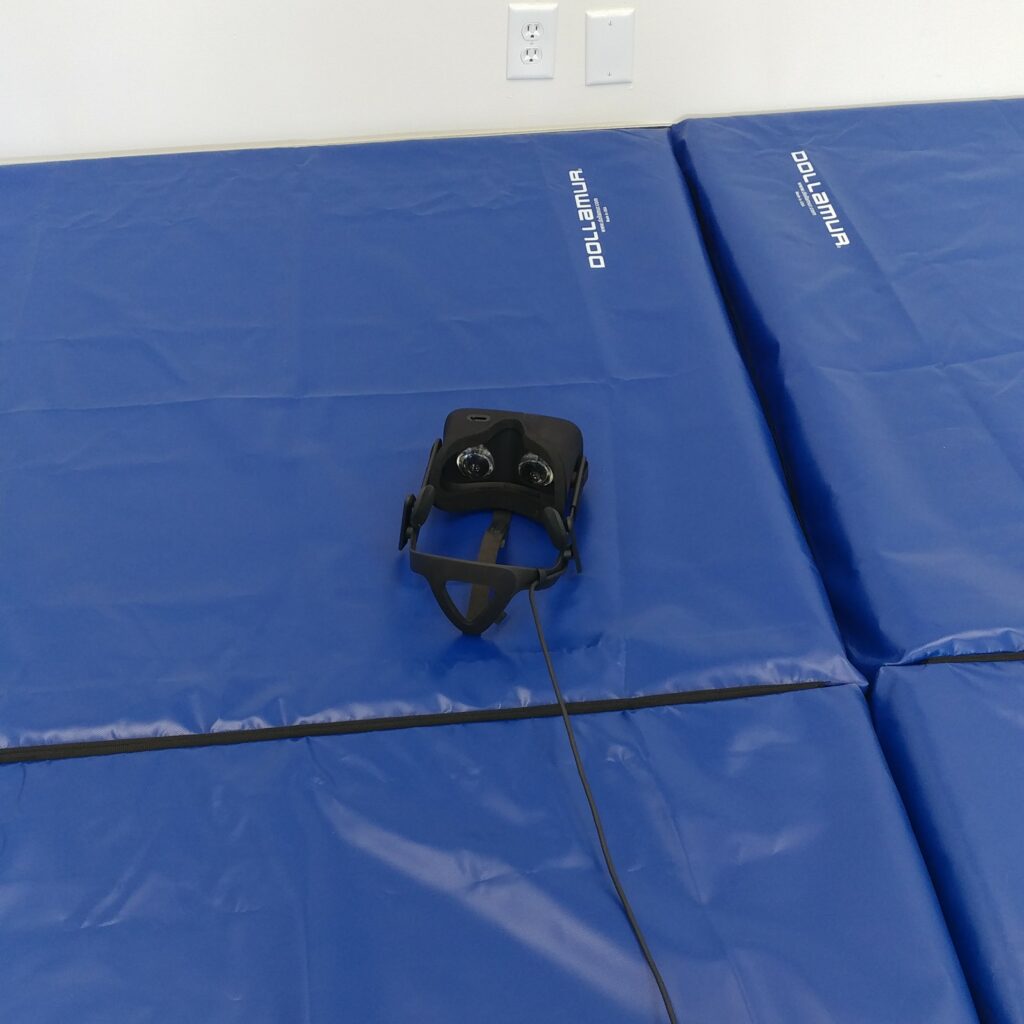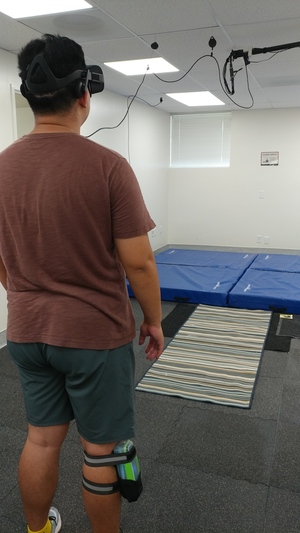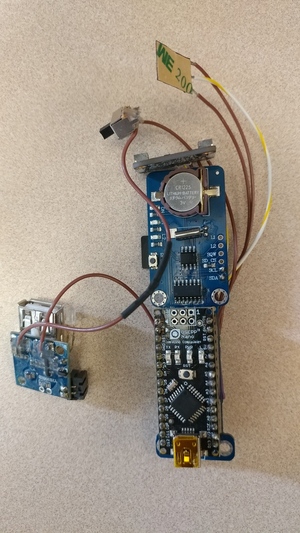
Located at 6475 Alvarado Court in room 233, the Fall Detection Laboratory in the SDSU HealthLINK Center’s Clinical Research Center provides a safe place to conduct human falls experiments.
We are conducting falls experiments with 200 eligible participants to capture and build an extensive dataset of inertial measurement data when people fall down onto a surface. Each trial involves a participant walking approximately 15 feet in a straight line within a 3-foot path width until they reach an approximate 3 square-foot section of thick cloth. During the entire period, each participant will be wearing an Oculus Rift S virtual reality (VR) headset and will thus not see where they are along the path. The VR headset will be connected to a Dell Alienware Area 51m R2 17-Inch Gaming Laptop with a 32.8-foot active USB 3.0 extension cable and 30 feet of daisy-chained StarTech 6-foot DisplayPort video extension cable. These two cable lines will be routed up and across the room ceiling and held in place using an Impact LSA-WMB7HD 7 ft wall-mounted boom arm, to keep the cable off the floor and away from the moving participant. The Alienware Area 51m laptop is configured with a NVIDIA GTX 1060 graphics card. Each participant will be presented a virtual scenario of a straight path. The moment of time each participant reaches the cloth, unbeknownst to the participant, the Graduate Assistant will pull on the carpet, with different levels of vigor, to induce the participant to either fall, or stumble and regain balance without falling. Should the participant fall, two Dollamur 5′ x 8′ x 6″ landing pads made from high density poly foam with a heavy-duty vinyl enclosure will cushion impact. These pads have 6 inches of thick foam and are specifically designed and engineered for throws, take downs and falls that occur in martial arts, jiu jitsu, wrestling, cheerleading and gymnastics.
The HealthLINK Multipurpose Room (room 11)

Fall experiments are conducted in room 11, the HealthLINK Multipurpose Room. Each participant will wear a Riddell SpeedFlex Adult Football Helmet with a protective face mask that covers the participant’s mouth, jaw, and chin, as well as knee and elbow pads designed for skateboarding.

During each fall trial, a research assistant will sit in the rear corner of the room at a movable laptop table to control the VR app presented to the participant.

We use both the Oculus Rift and Vive Cosmos Elite VR Headsets.

Preparation for induced fall with VR headset in use. Data logger affixed to shin.

Initial capture datalogger with ST Microelectronics MEMS tripe-axis accelerometer and gyroscope.
